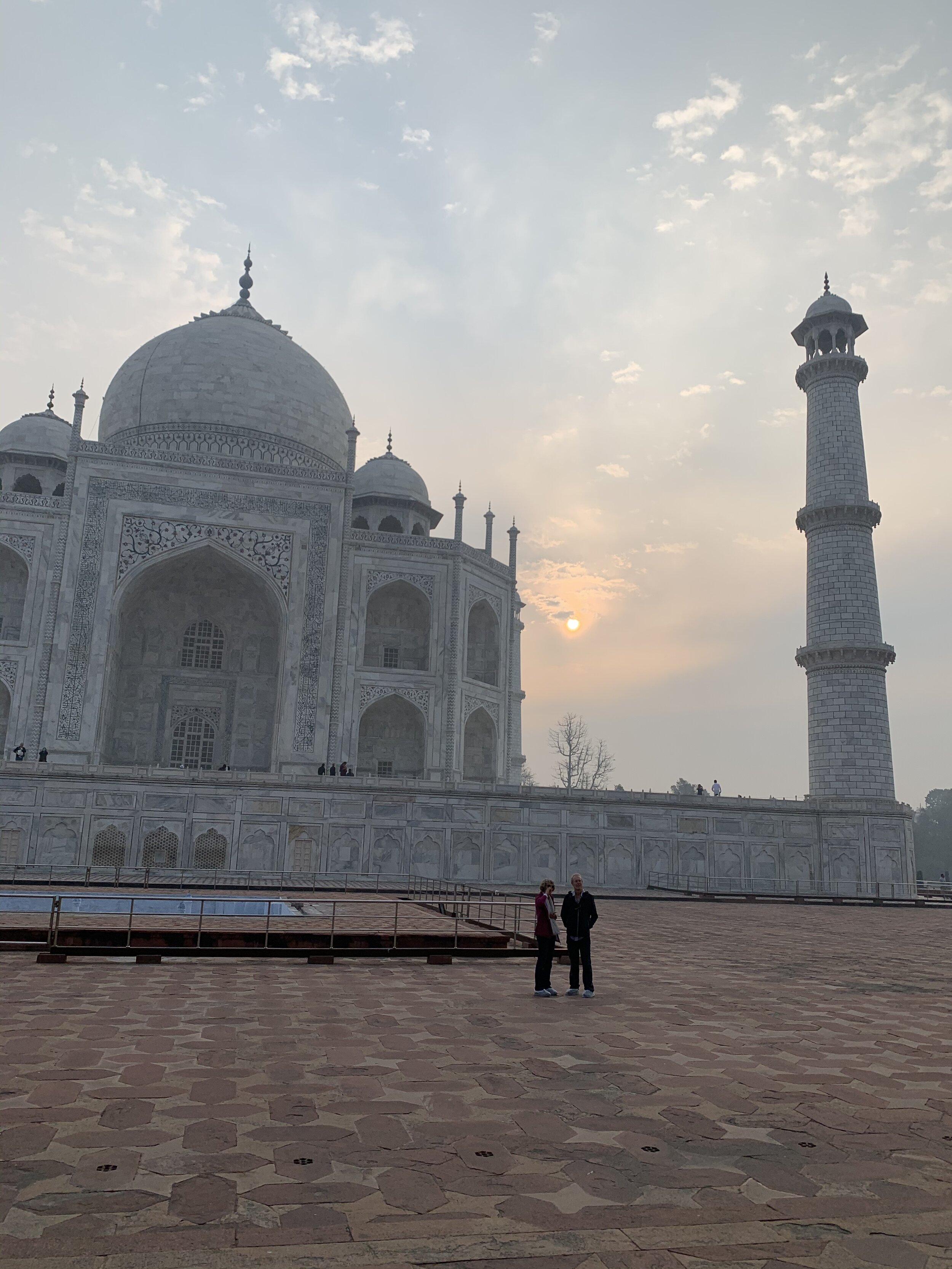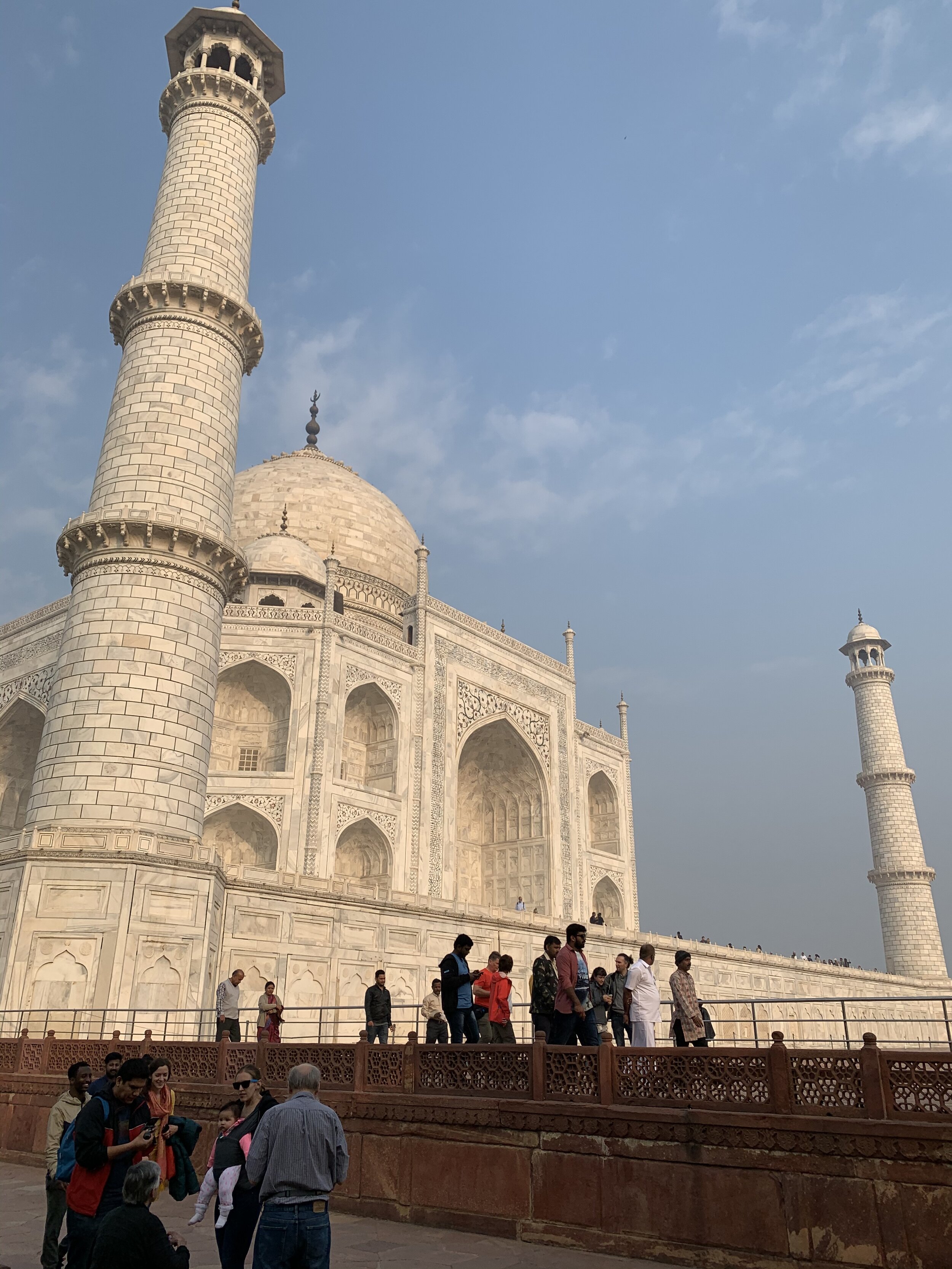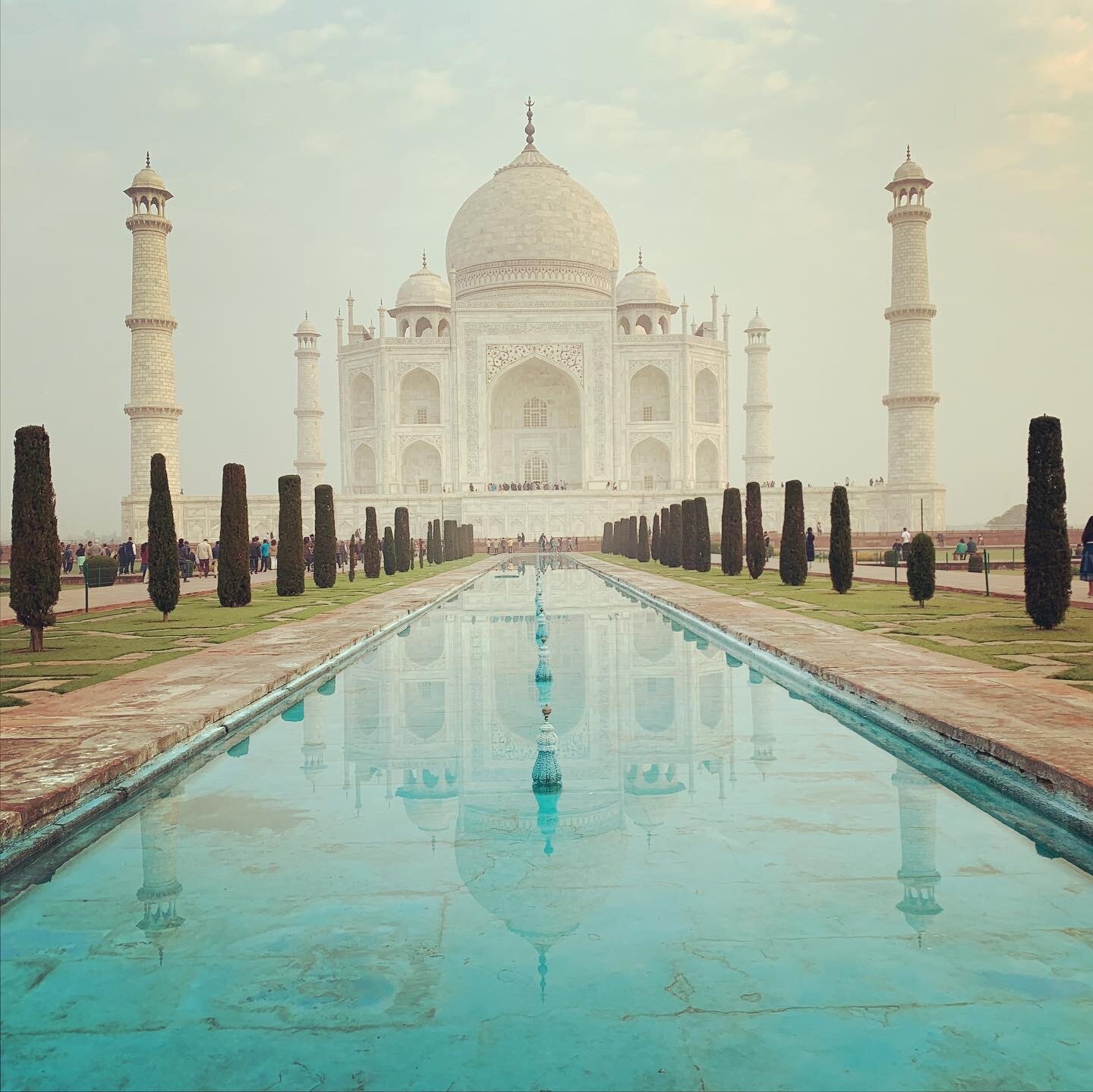Agra
Agra was not an easy place to get to, nor in our case, l was it so easy to leave. There is a military airport there that has commercial flight facilities, but for now it remains virtually empty, with only one scheduled flight per day, to and from Jaipur. This seems odd, given that Agra contains India’s number one tourist destination, the Taj Mahal, not to mention two other World Heritage sites. The drive from Delhi was a long four hours.
One of thousands of posters that appeared overnight
Through pure happenstance, we arrived in Agra just ahead of a highly ballyhooed visit from the President and First Lady of the United States. Our trip was arranged well before theirs, but somehow ours was not given top priority. We experienced a couple of delays and schedule changes imposed by the preparations for the Presidential visit, but otherwise it was, on balance, a plus for us. Our guide told us he had never seen his city so clean and beautiful. Freshly installed pots of flowers lined the street. The small shops all sported uniformed signboards. Our guide was incredulous—he said he had never known who the owners of these shops were nor what it was they sold. He remarked that it was almost like not being in India at all.
Gigantic posters welcoming the American leader were placed everywhere, extolling the warm relations between the two countries and between their two leaders, President Trump and Prime Minister Modi. Our President’s brief (36 hours) visit included a stop-off in Agra for a 45-minute tour of the Taj Mahal in between his first event in Ahmedabad and his formal state visit to Delhi. Again we were staying at the Taj Hotel, which is a modern convention-style hotel directly on the approach road to the Taj Mahal. Our rooms were “Taj Mahal View” rooms, but I hope we didn’t pay extra for them. You could only see the top of the main dome through the thick haze and then only in full daylight as there are no lights at the Taj Mahal. One feature of the hotel that we enjoyed was the rooftop bar/restaurant/disco with an infinity pool and a slightly better view of the Taj Mahal.
This was the first time any of the four of us had seen the Taj Mahal. We all agreed that the reality of it far exceeded what we expected, despite having seen photos of it throughout our lives. The mausoleum proper, the one that Shan Jahan built to house the body of his favorite wife, is the iconic white marble structure we all see in photos. It itself is huge, and stunningly beautiful—elegant, timeless, impossibly romantic. Our guide had an apt description of its visual impression: “It’s a soft building so that its image never tires you.” Many who have visited the site since it was completed in 1632 have written about how it miraculously changes colors in different sunlight and how it is best to visit in the early morning or late afternoon. We visited at sunrise, a move I heartily recommend, mainly because it is far less crowded than any time later in the day.
The builder of the Taj Mahal, Shah Jahan, is the same Mughal Emperor of whom I wrote earlier, describing his Red Fort and Jama Masjid mosque in Delhi (he built a smaller version of this in Agra as well). He also built marble palaces within the Agra Fort, another World Heritage Site, as well as glass palaces in Agra and Lahore. He brought architects, artists and craftsmen from around his world to design and construct these monuments to his power. A distinct style of architecture has been named for him: shahjahani.
With the Taj Mahal, he built a masterpiece, not only in its shape, its materials and its setting, but also in its exacting and supremely satisfying (to me) symmetry. An ironic historical footnote is that one of his sons deposed him after killing all his brothers. The son spared the life of his father, imprisoning him in an Agra Fort palace for the balance of his life. Thus Shah Jahan was never able to construct his own mausoleum which he had planned across the Yamuna river from the Taj Mahal, done in black marble. Instead, his son simply added a crypt for his father beside of that of his mother at the center of the building, thus defiling forever the otherwise uniform symmetry of the entire monument.
Our crew inside the Agra Fort
As mentioned earlier, there are other significant attractions in Agra besides its most famous one. Agra Fort was very impressive. Most striking was the beauty of the many palaces within the fort. Though the fort itself was completed for the Mughal Emperor Akbar in the sixteen century, several of the more dramatic places there were added a century later by Shah Jahan. It was in one such of his palaces that Shah Jahan spent the final eight years of his life, in house arrest after being deposed by his son.
We left Agra early on the morning of the President’s visit. We were allowed to pass through many security points on streets far quieter than the day before. Even more posters and more flowers had been added to the scene. We headed west in our van with our friendly and capable driver Raj. As soon as we passed the turn off to the Agra airport, the streets suddenly looked like the real India again.
A multistory palace within Fatehpur Sikri
An hour later we stopped to visit yet another fort, at Fatehpur Sikri. This one was larger still, but as with all the others, full of incredible examples of Mughal architecture, and the Persian, Hindu and other styles that were mixed up to create it. The abandoned city is remote from Agra itself and visiting it requires boarding uncomfortable buses at the tourism center across the highway. This visit was marred, at its start as well as its end, by the most aggressive hawkers we had encountered anyone. They were too numerous and too pushy. Given the trinkets they are thrusting in your face, they are essentially begging, frequently mentioning their poor families and hungry children. I don’t doubt their plights are dire, but India does itself a grave injustice by not providing their people opportunities to eke out a living without resorting to such a demeaning job for them and such an off-putting intrusion to its visitors.
As we resumed our long drive toward Jaipur, we were able to follow the events of the US President’s visit which was live-streamed on various Indian websites. It was eerie to see the motorcade roll through the very streets we had strolled the previous day, now completely deserted save for uniformed Indian soldiers. We did learn one other interesting fact. We had seen the Taj Mahal at this absolute finest. The day before we were there, it was pressure washed using local fire trucks. That was its most thorough cleaning in over a hundred years!







